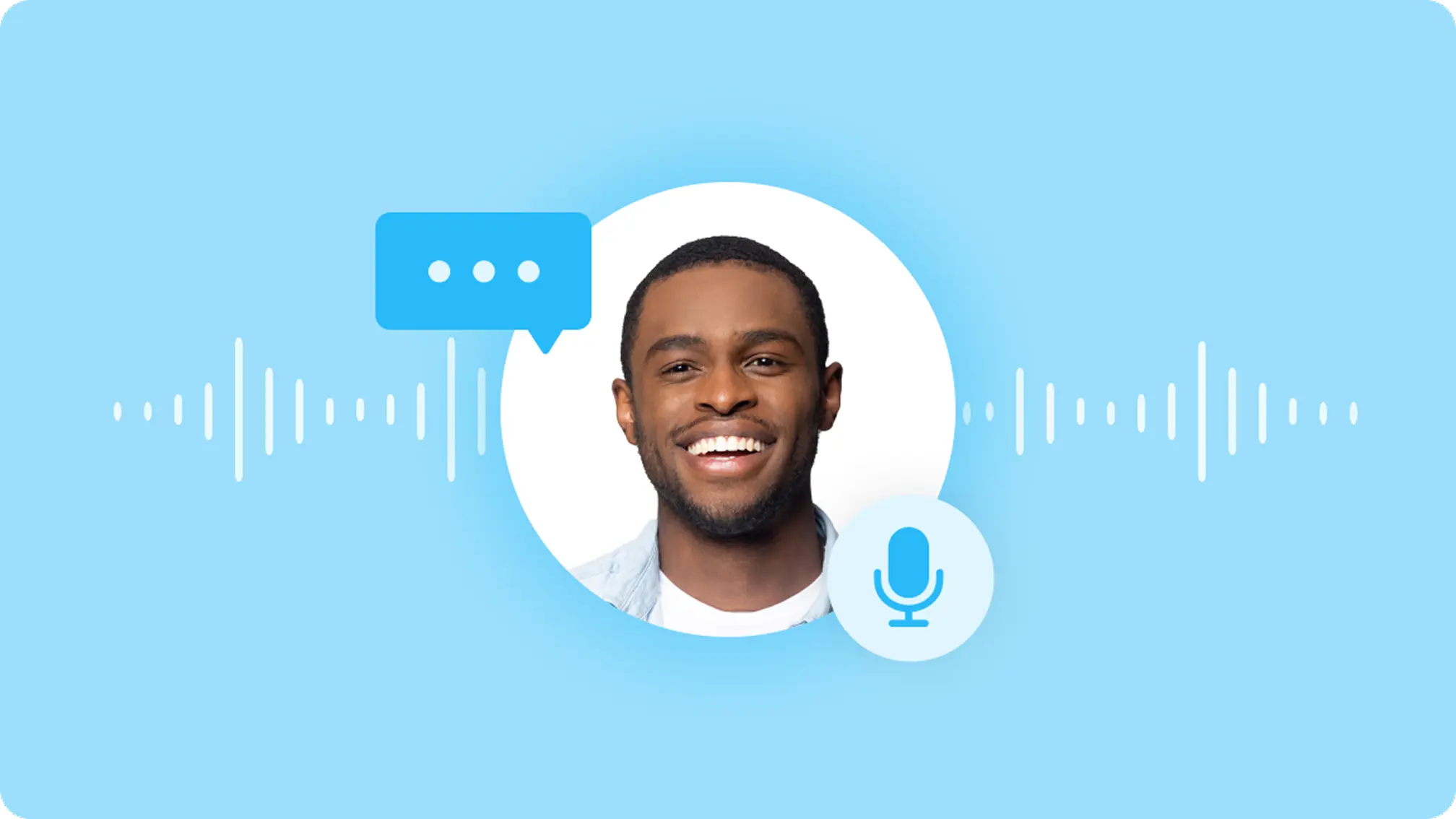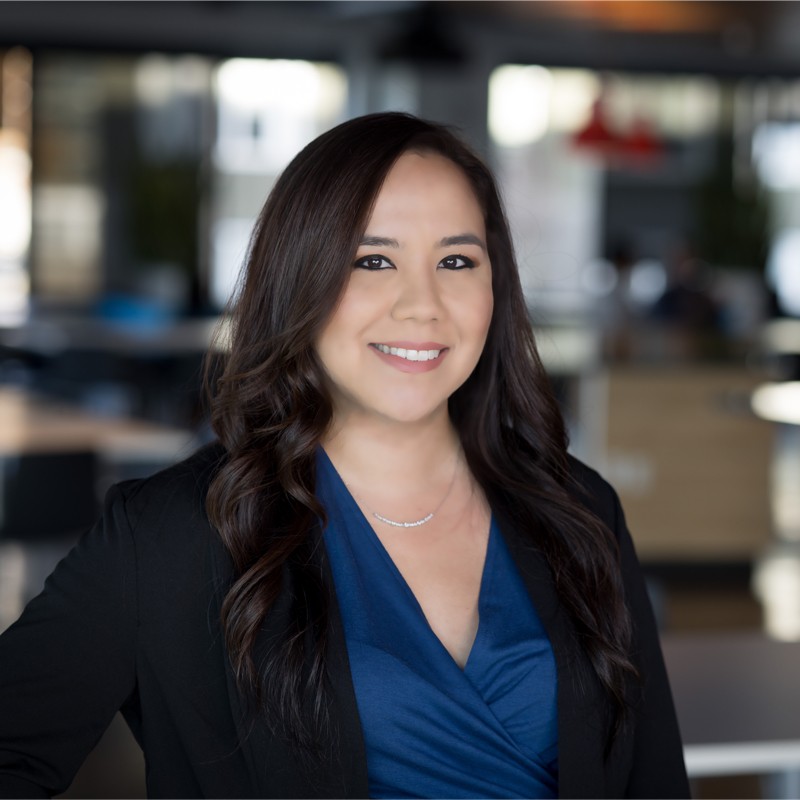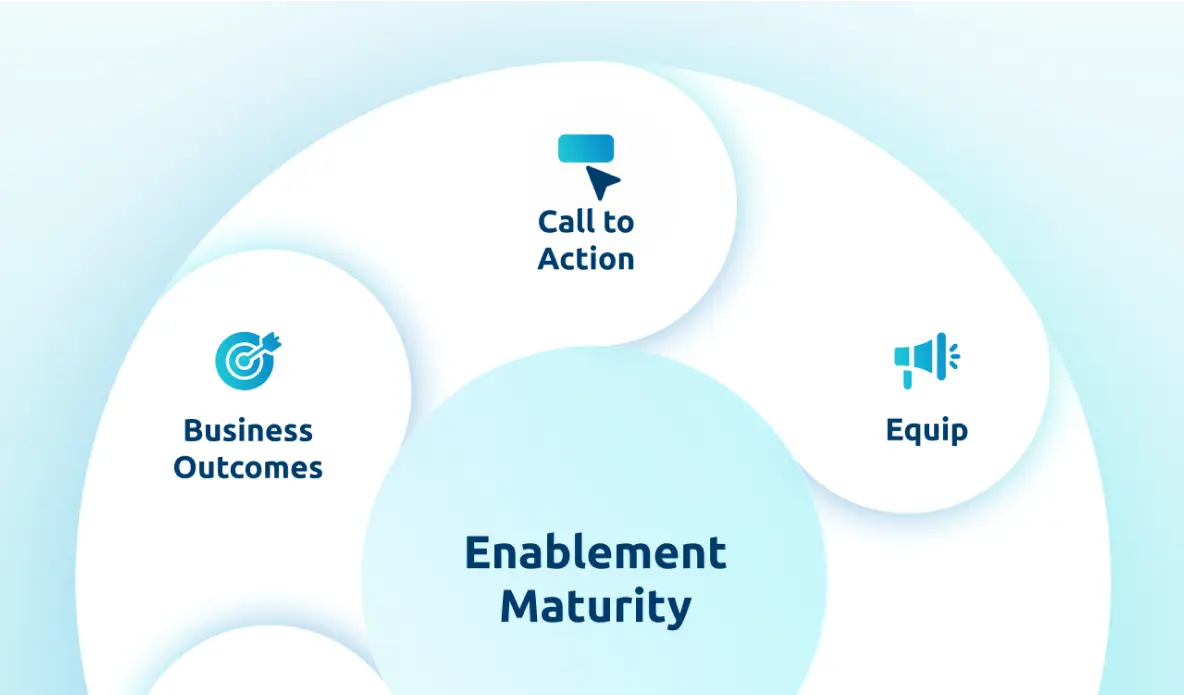In a study conducted by Sales Enablement Pro, organizations where training is led by enablement teams see a six percentage point increase in customer retention. So how can you maximize the impact of your training programs?
Shawnna Sumaoang: Hi, and welcome to the Win Win Podcast. I am your host, Shawnna Sumaoang. Join us as we dive into changing trends in the workplace and how to navigate them successfully.
Here to discuss this topic is Sofia Arroyo, the revenue enablement programs lead at Clari. Thank you for joining us, Sofia. I’d love for you to tell us about yourself, your background, and your role.
Sofia Arroyo: Thanks so much for having me, Shawnna, I’m excited to be here. My name is Sofia Arroyo and I have been in enablement for over six years. I started as a sales rep as an account executive and transitioned into enablement, and have never looked back. So I’m based in the San Francisco Bay area and very excited to talk today.
SS: We’re excited to have you here. I know you recently joined the Clari team, and as you mentioned in your introduction, you bring a lot of frontline sales experience with you. How does your experience as a frontline seller guide your approach to enablement?
SA: Yeah, for me the biggest thing is understanding and emphasizing the “what’s in it for me” and “why does this matter?”
So often enablement, in a good way, is very sought after. People want to learn, people want to teach others, and get in front of sales teams overall. But, really answering the question: what’s in it for me as a seller? Why does this matter? How is it going to help me sell more, and have better conversations with customers?
That has helped me in my own experience deliver great enablement overall. A second part of this is giving focused learning. So, delivering focused learning and reducing the noise that often hits sales teams. I remember as a seller myself, feeling overwhelmed because we had so many meetings all the time.
There were tons of people coming to talk to us and thinking, “Man, what would I have wanted or what do I wish I had when I was a seller?”, and taking that focus and applying it to enablement overall. So really emphasizing, again, what’s in it for me and what do we want sellers to be able to do has helped me deliver impactful enablement programs at the companies I’ve worked for.
SS: Absolutely, it sounds like you really know what it’s like to walk in their shoes, and I expect that is especially helpful on this front. Now, I noticed something on your LinkedIn profile, and it mentions that you aim to promote a learning culture. I would love to understand, how do you foster a culture of learning amongst reps, especially with your background as a seller?
SA: I would say two ways. The first is, again, making things very relevant. When I think back to being a seller, as I mentioned, I was eager to learn and I wanted to talk to other people who were seeing success, and at the top of the leaderboards. And so I knew at that time, but I really wanted to think about, okay, what do I want to see as a learner?
And who do I want to talk to? So, a lot of that is how we make enablement and training relevant to learners and sellers to really make sure they see why it’s impactful. And then that creates that learning culture overall. So really, “Hey, I’m hungry to learn because I know it will directly impact my book of business, and it’s going to directly impact how I talk to prospects and customers, and I’m going to see success from it overall.”
The second thing is peer-to-peer learning. One of the things we don’t always emphasize in enablement is the importance of actually teaching others when we learn something. It’s that defining moment of, “We’ve actually really effortlessly implemented a new learning or behavior change when we can teach other people something.” So leveraging peer-to-peer learning to create that culture of learning from, not just folks like myself and enablement, but people who want to hear from other folks like themselves, and making sure you can connect others to people who are experiencing exactly what they are on a day-to-day basis is a great way to promote that culture of learning internally.
SS: I love that you’re driving that. And your team implemented Highspot’s training and coaching capabilities. How does having a unified enablement platform help you deliver more effective learning programs?
SA: I will have to give a shout-out to the strategic enablement framework overall that we’ve talked about at Highspot and we’ve talked about internally here at Clari and at the companies I’ve worked at.
It’s that consistent execution piece. Training and coaching is something we all know is necessary, but it’s about implementing it in the workflow of our reps and in our learners. Having one platform where people can go to not only get the resources, and content they need to be successful, but then have access to coaching opportunities in mere real-time or when they need it makes for that flywheel of the equip, train, and coach to work effectively. It’s the only way that we can make sure that we are capturing the right behaviors and promoting the right outcomes within our organization by having a single pane of glass that we can look at when it comes to implementing enablement programs overall.
SS: Now, you mentioned earlier that you focus on designing outcome-based learning. What are some of your best practices for helping reps put learning into action and how do you leverage Highspot to help?
SA: First and foremost, it’s meeting reps where they are. I can’t tell you the number of times, and I think part of enablement is also learning from mistakes. No one’s perfect, I’ve tried, and there’s a trial and error piece of what I’ve done and my success as well. But I think one of the biggest things I’ve heard from reps is, “Oh man, I have to keep going to all these different tools or systems to access what I need to be successful. I’m not really sure how it applies to my book of business, or what I’m doing on a daily basis.”
So, the first thing is meeting reps where they are and really making sure that you are designing enablement that again meets them in their workflow but also applies what they need to be doing on a daily basis. So if we do something on prospecting, we’re talking about, “Hey, we’re going to talk about how we prospect.”
It’s not just a 30-minute webinar on how we prospect. Death by PowerPoint is never fun, but it’s actually, “Great. Let’s pull up an account list. Take your account list. We’re going to walk through those personas that we’re targeting and best practices for that.” So, make it action-oriented when we can.
That is the benefit of the remote, virtual learning and training that we can do, is utilizing break rooms in Zoom to make it, again, action-oriented, then hit those outcomes that we’ve identified at the beginning. The other thing here is making sure that we clearly define what outcomes are at the beginning and having that conversation up front, not just with sellers, but also with our cross-functional stakeholders and partners as well.
So whenever someone comes to me and says, we want to train on this, we want to enable the field. It is, “Great. What do we want our sellers to be able to do? And how do we make sure the enablement matches that to make sure that we are hitting those outcomes?” And lastly, it’s about repetition. We have to move away from the one-and-done enablement, but really push ourselves as enablement leaders and as enablement professionals, as well as our cross-functional stakeholders, to say, “Great, you want to train on this now. What do we do in two weeks from now? In a month from now, next quarter, to reinforce that learning?” So I think making sure that we’re constantly tying back to those outcomes.
We’re utilizing things like Highspot to look at what assets are being leveraged. We’re taking analytics into account to really measure the success of our programs, not just in one moment, but also over a longer period of time as well.
SS: That is fantastic. And you’ve been so thoughtful in the way that you’ve designed this that I imagine you want to make sure that your reps are taking full advantage of these and really adopting the training.
What are your best practices for driving adoption of your learning programs amongst your reps?
SA: I feel like a little bit of a broken record, but I will say making it relevant. I think that paired with peer-to-peer learning, as I mentioned before, it’s been really helpful for us. Really making sure that we have voices from the field.
I think one of the key learnings I had early on in my enablement career was just taking enablement and working on it in a silo and delivering it without getting input from the field, from sellers, and from leadership. One of the ways that we’ve seen the most success from driving adoption is not just taking a top-down approach from having directors or our CRO talk about the importance of enablement, but actually having peers and other sellers talk about, “Hey, this was really impactful for me. I was able to close this deal because of X, Y, Z.”
So I think one thing is again, making it relevant, utilizing voices from the field, not being afraid to get other people involved in that way, to make sure that we can really have the biggest impact possible. The other thing I think is really supporting managers. And I think that’s something that Highspot allows us to do differently, is making sure that we are training the trainer in some cases, but also just giving them the tools and insight they need and make that readily accessible to them so that they can then drive adoption within their own teams.
So, I think it’s a combination of making it relevant, but also setting our managers, our frontline managers up for success to be able to support their teams on a more individual basis as well.
SS: I love those best practices and it’s clearly paying off. You guys have had tremendous progress on this front.
I think Clari is at an 81% active learner rate with an 11% increase in just the last couple of months, so absolutely amazing, and a testament to the work you and the team are doing there. On that particular topic, I’d love to understand how do you measure your progress and use metrics to really optimize your results in your programs?
SA: Yeah. So first and foremost, it’s really centered around rep productivity and that starts with: can reps find what they need? And when they do find content or assets, are they leveraging them in ways that drive pipeline? The other way that we measure progress is by looking at true metrics, top-of-funnel metrics, so pipeline generation, looking at deal velocity, really connecting back to those, the key metrics that are fundamental and really crucial to healthy sales teams overall.
And I think being able to connect enablement back to those true sales metrics is a key part of how we measure progress. It’s not just about are people learning? Are they actually attending learnings, but are we actually seeing pipeline being impacted?
Are we driving more pipeline? Are we talking to the right people, really making sure that we are leveraging metrics and KPIs, as well as just looking at the data at every single turn to make sure that we are seeing true impact from the programs that we are delivering overall?
SS: How does high adoption of your enablement programs help you drive the business outcomes that you aim to achieve? And do you have any wins you can share?
SA: Yeah, the biggest win so far that was really exciting was following our sales kickoff. So we launched a new solution, sales motion at our kickoff this year and following RKO, we made sure to actually create post work within Highspot. So we created a learning path and leveraging some of the things I mentioned earlier, getting frontline managers involved, making it relevant, bringing in those voices from the field.
We really saw high adoption and almost excitement to finish those courses, because it was very impactful for our reps and actually drove better conversations with the people they were trying to sell to. So that was a big one for us. And what we’ve been able to see is from our call intelligence platform, from the Highspot analytics within the learning path as well.
And just, anecdotal feedback as well is that we are actually seeing deals move through the pipeline faster. We’re seeing more impactful discovery being made with our prospects and customers. And we’re actually seeing increased deal size as well. So one of the big parts of our solution sales motion was, how do we really provide and talk about value versus just focusing on product features and functions to sell the full platform of Clari, and we’re actually seeing our reps being able to have more of those conversations, which is very exciting.
When you have high adoption, when you create that culture of learning, you actually see that impact the business directly. And it’s a really exciting time for us overall. And we’re excited to see what happens for the rest of the year.
SS: Amazing. And very tangible, concrete business results there, so fantastic work. Last question for you, as you look to the future at Clari, how do you plan to leverage innovation like AI capabilities to continue to optimize your learning programs?
SA: AI is the hot topic these days for sure and we’re knee-deep in it as well here at Clari. I think for me, what’s really exciting and what I start to think about is imagining a world where we could deliver hyper-personalized and effective training in the workflow of our sellers, leveraging AI, and being able to align training with an individual’s past performance. What if we could leverage AI, and I’m imagining a world pretty soon, I feel like, where we could take what we’ve learned, individuals past performances, look at what their strengths are, look at what their growth areas are, and then create a hyper-personalized enablement program for them.
I think that’s the tough part and the answer that we’re all looking for now is how do we create enablement programs that are personalized at scale, right? We can’t do one-to-one coaching all the time, that’s where leveraging frontline managers is so important. I think AI is going to give us the opportunity to analyze the data based on where are reps struggling.
Are there certain points within a deal where, whether it’s stage three or stage four, or at the close, where they need extra help? And when we see those triggers, can we then push them content they can then review and learn again in their workflow? I think those are the things where while AI is again, such a hot topic right now, it’s really exciting to think about ways in which we can really impact, not just people’s lives, but also their ability to be successful in role, and to have that overall. So we’re excited to see that. I know Highspot’s doing a lot on the AI front too, in terms of coaching. I think coaching is what everyone is asking for. That’s the number one request from our reps right now is, “Give me more coaching.”
And I think that it’s really exciting to see, to think about how we can leverage AI to support our team, not just again, in terms of being successful from a seller side, but also impacting retention. Imagine what it would do if you could in real time, have someone coach you on what you could do better and implement that the next day, right?
It’s that real-time impact that I think will not only have an impact on the growth of the business but also keeping sales teams happy, keeping people happy where they want to be at a company and stay there for a long time. You’re very excited to see where AI goes and definitely think about it on a daily basis.
SS: I love that, Sofia. And I have to say, I think you might have a crystal ball, not that I can confirm or deny the Highspot roadmap, but you are definitely onto something there. So thank you again so much for joining us today. I really appreciate your time and your insights.
SA: Thank you so much for having me. I’m looking forward to building an even stronger partnership with you all.
SS: To our audience. Thank you for listening to this episode of the Win Win Podcast. Be sure to tune in next time for more insights on how you can maximize enablement success with Highspot.
Looking for more best practices to shape your enablement strategy? Take the State of Sales Enablement 2024 survey, and get data-driven insights on innovating your enablement efforts to drive consistent sales performance this year.



